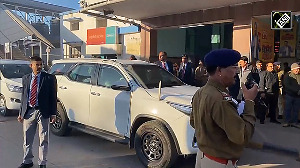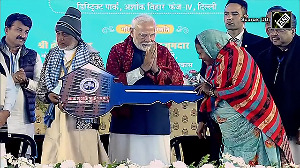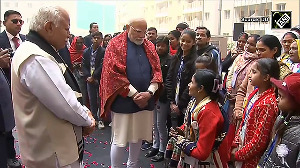If the new regime is introduced in 2017, the govt may lose out on cess, surcharge

The Centre may lose over Rs 1.5 lakh crore revenue from cess and surcharge if the goods and services tax (GST) is fully rolled out in 2017-18.
However, the government may get a cushion for a few years as the chances are that the GST may be implemented without petroleum attracting the new indirect tax to begin with. Close to 70 per cent of the cess and surcharge from excise duty and service tax was accounted for by petroleum only.
Revenue from sources like cess and surcharge on excise and service tax has been budgeted at Rs 1.55 lakh crore in 2016-17, or 14.7 per cent of the Centre’s total net revenue after devolution to states.
The budgeted revenue from cess and surcharges more than doubled from 2014-15 and is 22.5 per cent higher than in 2015-16.
In 2014-15, Rs 75,232 crore (Rs 752.32 billion) came in as cess and surcharge, or 8.32 per cent of total tax revenue after adjusting for states’ share.
In the previous financial year, Rs 1.26 lakh crore accounted for 13.3 per cent of the Centre’s total net revenue.
The government is hopeful of gaining majority for passing constitution amendment bill for GST in the Rajya Sabha in the monsoon session. In the current financial year the government has budgeted Rs 10,000 crore revenue from Swachh Bharat cess, Rs 5,000 crore from Krishi Kalyan cess and Rs 3000 crore from Infrastructure cess.
The Centre does not share cess and surcharge with states. A cess is a tax levied to raise funds for a specific purpose and can be imposed or modified easily through a notification.
On the other hand surcharge is a fee or other charge that is added to the cost of a good or service and is typically added to an existing tax.
All cesses and surcharges will be subsumed under the GST regime and a common tax, called standard rate will be applicable on all goods and services.
The standard rate according to the recommendations made by the Chief Economic Adviser Arvind Subramanian headed committee will range between 17 per cent and 18 per cent.
The cess on crude oil is budgeted at Rs 10,303 crore in 2016-17, against Rs 14,962 crore (Rs 149.62 billion) in 2015-16. The additional excise duty on motor spirit and high-speed diesel and the special additional excise duty on motor spirit, both called road cess, are budgeted at Rs 97,000 crore (Rs 970 billion) in 2016-17.
It’s a grey area if the Centre would still impose cess on petroleum if it does not come under GST to begin with.
“Till the time petrol and diesel remain out of the GST, the Centre will have the authority to impose any tax on fuel. It may be inconvenient, but that is how it is at the moment,” an official said.
Even when GST is rolled out, constitution amendment Bill, as passed by the Lok Sabha, authorises the Centre and states to impose central excise duty and value added tax respectively on petroleum till the proposed GST council decides to bring it under the new tax regime.
After imposing the Swachh Bharat cess from November 15, the Centre introduced the Krishi Kalyan cess and the infrastructure cess in the Budget for 2016-17, besides doubling the environment cess. However, the Centre abolished 13 cesses that yielded less than Rs 50 crore (Rs 500 million) a year each.
Photograph: Reuters







 © 2025 Rediff.com -
© 2025 Rediff.com -